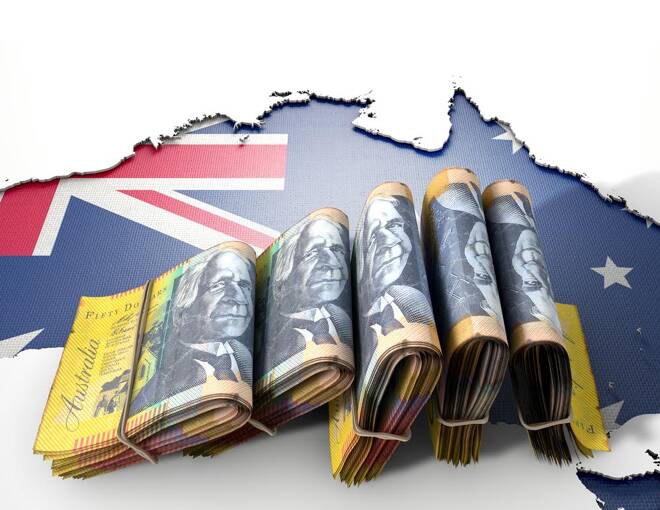Advertisement
Advertisement
AUD/USD and NZD/USD Fundamental Daily Forecast – Supported by Stronger Domestic Data, Weaker U.S. Dollar
By:
The data releases are a good sign that the economic recoveries in New Zealand and Australia are on the right track.
In this article:
The New Zealand and Australian Dollars traded higher against the U.S. Dollar on Tuesday, as improved market sentiment and optimistic economic reports drove the risk-sensitive and commodity-linked currencies to multi-week highs.
The Kiwi finished 0.30% higher to .7240 against the greenback, its highest since January 8, climbing toward its January peak of .7316 on the back of stronger inflation expectations.
The Aussie closed 0.45% better to .7738 versus the greenback, its best price since January 27. The move put the currency in a position to change the main trend to up on the daily chart on a move through .7764.
New Zealand Dollar
New Zealand’s near-term inflation expectations for the year posted a large rise to 1.77% from 1.23% previously, a survey by the central bank showed, while two-year expectations rose 30 basis points to 1.89%.
“Markets have acknowledged New Zealand’s successful COVID management and ensuing economic recovery, but recent economic data has surprised even the most optimistic pundits,” Westpac analysts said in a note to clients.
Australian Dollar
A measure of Australian business confidence picked up in January while conditions eased back from historic highs as coronavirus breakouts curbed activity in a few cities but were ultimately contained.
National Australia Bank’s index of business confidence doubled to +10 points in January, while its measure of conditions fell to +7 from a very strong +16 in December.
The conditions index was still a world away from the trough of -34 hit last April at the height of the coronavirus pandemic and remained just above its long-run average of +6.
The index of sales halved to +11 in January, while profitability fell 4 points to +9 and employment eased 7 points to +3.
“Business started the year on a more optimistic note, even as conditions eased from the strength we saw in December,” said NAB Group Chief Economist Alan Oster.
“Importantly, employment conditions remain in positive territory – so overall businesses are still expanding their workforce.”
The labor market has recovered far faster than expected in recent months with the jobless rate dropping to 6.6% in December, from a peak of 7.5% last July.
The survey’s measure of capacity utilization edged up to 81.0% in January, to be around its pre-COVID level. “We hope to see capacity utilization rise further over coming months as demand picks up, which should, in turn, see businesses consider expanding capacity through hiring or investing,” said Oster.
The survey’s index of investment firmed to +1 in January, up from a low of -32 last year and its first positive reading since the pandemic began.
Short-Term Outlook
The data releases are a good sign that the economic recoveries in New Zealand and Australia are on the right track, but the price action suggests both currencies are still going to need a boost from a weaker U.S. Dollar. Essentially, bullish investors are banking on continued demand for riskier assets, lower U.S. yields, an accommodative U.S. Federal Reserve and additional fiscal stimulus from the U.S. government.
For a look at all of today’s economic events, check out our economic calendar.
About the Author
James Hyerczykauthor
James is a Florida-based technical analyst, market researcher, educator and trader with 35+ years of experience. He is an expert in the area of patterns, price and time analysis as it applies to futures, Forex, and stocks.
Did you find this article useful?
Latest news and analysis
Advertisement
